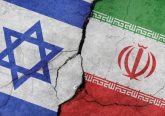In December 2010, a revolutionary spark in Tunisia initiated what is now referred to as the Arab Spring. Since then, many countries across the broader Middle East have been swept up in uprisings that have led to fundamental shifts in Tunisia, Egypt, Libya, and Yemen. The same drive for change has also led to minor changes in Jordan, Morocco, and elsewhere.
These events have drawn the attention of many regional and international observers, experts, and scholars. In many circles, there was a widespread optimism with respect to the nature and course of the Arab Spring, and some observers held to the domino theory, that is, if one revolution took hold, others would follow. Indeed, these expectations and interpretations have been proven true to some degree. First, the contemporary Arab uprisings were able to put an end to dictators and quasi-dictators in Tunisia, Egypt, Libya, and Yemen, such that the deposed presidents and parts of their cliques were arrested (e.g., Egypt), accused of state crimes and corruption (e.g., Tunisia), or caught and murdered (Libya). Second, these events put these countries on a path toward political transformation. In this way, we have seen in the major Spring-nations the establishment of new political parties and elections. Due to the modification of whole regimes, these states have completed successful transitions; a significant first step toward democratization.
Moreover, this new revolutionary context promoted regionally the public sphere and public participation, which put pressure on many Arab monarchies, fearing a domino effect, to reconsider their governance policies. As a result, states like Jordan and Morocco were required to boost political liberties and promote the national economy. Indeed, the on-going Arab Spring movement, which began in late 2010, could be acknowledged as one of the most imperative regional events since the end of the WWII.
Despite these achievements, I argue that the degree of the political transformation during the Arab Spring movement has been modest according to both quantitative and qualitative measures. The Arab Spring, as a term, refers to the political phenomenon sweeping over the Arab World è la Eastern Europe in 1989.
However, a comparison of the number of the major Spring-nations that have been affected during the first, second, and third waves of the Arab Spring, to the number represented in the Arab League, makes it apparent how modest the Arab Spring has been. The dramatic thawing of civil demonstrations and protests also puts into question whether the current revolutionary fundamentals (social and political conditions) in the Arab World will serve as a motor for revolutionary outcomes across the Arab regions. Moreover, successful uprisings have failed to realize coherent progress and there has been a remarkable slowdown in the transformation processes in Tunisia, Egypt, Libya, and Yemen, and one could even state that there are efforts of counter-revolutions.
There are different reasons for the above mentioned shortfalls of the Arab Spring movement. Due to space limits for editorial notes and the fluidity of the political situation in the region, just a few factors will be explored here.
It is common sense that transformative outcomes in so-called developing countries are dependent upon, above all but not exclusively, human agency and the position and role of the old guard and the military. The Arab Spring has indeed set some Arab states on the democratic path, but a successful transformation is not a given due to the formidable challenges and pitfalls facing the revolutionary regimes. A promising transition depends upon a new regime’s set of state powers, its capability to operate the emergent system, and its ability to promote structural and institutional changes in domestic politics and in the economy resulting in social justice, good governance, and fair distribution of the national wealth. Those were main demands in the Arab streets.
Indeed, major Spring-nations have witnessed a change of regime, but members of the old guard and the militaries are still controlling important aspects of domestic politics and economy. In particular, the case of Egypt has proven, once more, the complexity of the transformation process. The lack of know-how among the Islamist political elite, along with the passive cooperation of the old guard and their attempts to regain power, created a fatal combination. The resulting political impasse worsened the national economy and changed the sentiment negatively toward the presidency and the Muslim Brotherhood. From the perspective of many Egyptians, this constellation of factors was a convenient reason for supporting the army coup to ensure the de-Islamization of the political sphere and to gain control over the economy, politics, and foreign affairs.
Ironically, two further reasons behind this thawing—I believe—are the geopolitical implications and regional complications of the political upheavals in the Middle East.
One needs to acknowledge that beyond their local political, economic, and societal implications, the Arab uprisings have triggered several developments in Middle Eastern politics and have thus affected the regional order. We have registered a general change in the ideological orientation of the political elite. While the revolutionary nations had been mostly governed during the last decades by secular (and socialist) political elites, the Arab Spring has promoted Islamist political parties. This new elite is in contrast to the previous elite in that it is not rooted in the conventional political game of the Middle East and, as a consequence, it is not–taking the legitimization of the Arab Spring into consideration—dependent on the traditional regional core states (e.g., Iran, Saudi Arabia). The emergent power structures do not necessarily fall along the traditional axis of the regional order, which, in the long term, might motivate them to take different positions with regard to regional issues such as the Iran-Arab conflict or the Israeli-Palestinian conflict.
Such geo-strategic considerations regarding the displacement of the regional supremacy caused concerned core nations to view the Arab Spring movement from their own security perspectives. This gave rise to an active (diplomatic and military) interference in the developments of specific Arab revolutionary processes in order to maintain the status quo of the deep-seated regional order, or to modify it in favor of the so-called resistance camp, or, alternatively, in favor of the western-friendly/moderate camp. Both camps are supporting diametrically opposed causes and associates. Due to these calculations, for instance, Saudi Arabia and Iran took Bahrain and Syria, respectively, under their security umbrellas.
From today’s perspective, it appears that rival inter-Middle Eastern politics and sectarian and interreligious tensions have been undermining (if not choking) the self-regulation and self-transformation of the political processes of the Arab Spring movement.
I believe that we are witnessing the end of the so-called Arab Spring.
[box]This piece ‘The End of the Arab Spring?’ appeared first as an editorial note to a special issue (of the journal ‘Alternatives: Turkish Journal of International Relations’ 12, no. 3, Fall 2013) dedicated to ‘The Arab Spring: Comparative Perspectives and Regional Implications’ that was edited by Dr Philipp Amour.[/box]






No Comment